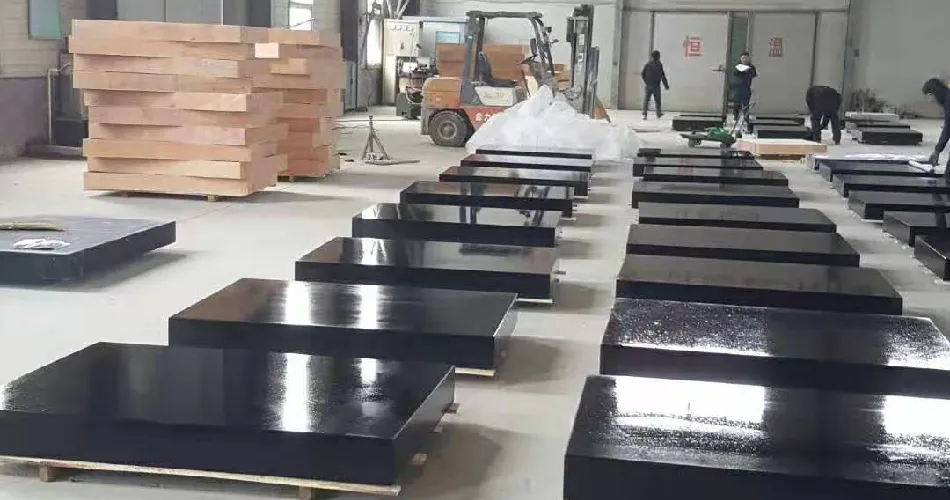nov . 14, 2024 15:46 Back to list
small surface plate
Understanding the Importance of Small Surface Plates in Manufacturing and Metrology
In the realms of manufacturing and metrology, precision and accuracy are paramount. Among the myriad tools that facilitate these objectives, the small surface plate stands out as a vital piece of equipment. Smaller in size yet significant in function, these plates offer a stable and reliable reference for various measurements, making them essential in quality control processes and routine inspections.
What is a Small Surface Plate?
A small surface plate is a flat, rigid structure typically made of granite, cast iron, or aluminum, used in conjunction with precision measuring instruments. These plates provide a stable base to ensure that measurements are taken on a true plane, thereby minimizing errors arising from surface irregularities. The dimensions of a small surface plate can vary, but they are generally designed to be portable and adaptable for use in different settings, from workshops to laboratories.
Key Features of Small Surface Plates
1. Material Composition The most common material for small surface plates is granite, praised for its durability and stability. Granite's non-deformable nature under changes in temperature and humidity makes it ideal for maintaining measurement precision. Cast iron is another common choice, providing weight and durability, while aluminum is lightweight, enhancing portability.
2. Flatness and Surface Finish Small surface plates are manufactured to strict tolerances in terms of flatness. The surface finish is critical as it affects the interaction with measuring tools. Higher precision plates have a finely ground surface that ensures minimal friction and better contact with the items being measured.
3. Versatility These plates are not confined to one application. Whether it is for layout work, fabrication, machining setups, or general measurements, small surface plates provide a versatile solution for many engineering and manufacturing tasks.
Applications of Small Surface Plates
small surface plate

1. Quality Control In manufacturing, small surface plates play a crucial role in quality assurance. By providing a flat reference plane, they allow technicians to accurately check the dimensions of parts against specifications. This is particularly important in industries like aerospace and automotive, where precision is essential for safety and performance.
2. Calibration of Instruments In metrology, small surface plates are often used to calibrate measuring instruments. They serve as a stable reference point for leveling or aligning tools like micrometers, calipers, and optical devices, ensuring that measurements taken thereafter are reliable and consistent.
3. Inspection Stations Small surface plates can essentially serve as inspection stations where finished products or parts are checked for conformity to design specifications. They can be equipped with additional measuring tools or gauges to facilitate a thorough inspection process.
4. Engineering Layouts Engineers frequently use small surface plates to layout designs for machining, fabrication, and assembly processes. The reliable flatness of the plate ensures that the layout (including inscribed shapes or lines) is accurate, reducing the likelihood of errors during subsequent manufacturing steps.
Maintaining Small Surface Plates
Proper care and maintenance are essential to preserve the integrity of small surface plates. Regular cleaning with non-abrasive materials prevents the buildup of dust and debris, which can affect measurement accuracy. Additionally, periodic inspections should be conducted to check for chips, warping, or other damages, as even minor flaws can lead to significant measurement errors.
Conclusion
Small surface plates may be compact in size, but their impact on accuracy and precision in manufacturing and metrology is substantial. By serving as essential tools for quality control and calibration, these plates help ensure that products meet stringent industry standards. As technology advances and industries evolve, the role of small surface plates will remain crucial, underpinning the need for precision in an increasingly competitive market. Encouragingly, with ongoing innovations in materials and manufacturing processes, the future of small surface plates looks promising, reinforcing their status as indispensable instruments in the precision-driven fields of engineering and manufacturing.
-
Y Type Strainer Applications in Industrial Water FiltrationNewsJun.19,2025
-
Portable Welding Workbenches for On-Site ProjectsNewsJun.19,2025
-
Plug Ring Gauge Applications in Automotive Quality ControlNewsJun.19,2025
-
How to Calibrate a Precision Spirit Level for AccuracyNewsJun.19,2025
-
A Comprehensive Guide to Valve TypesNewsJun.17,2025
-
Precision Quality Control with Ring GaugesNewsJun.17,2025
Related PRODUCTS









